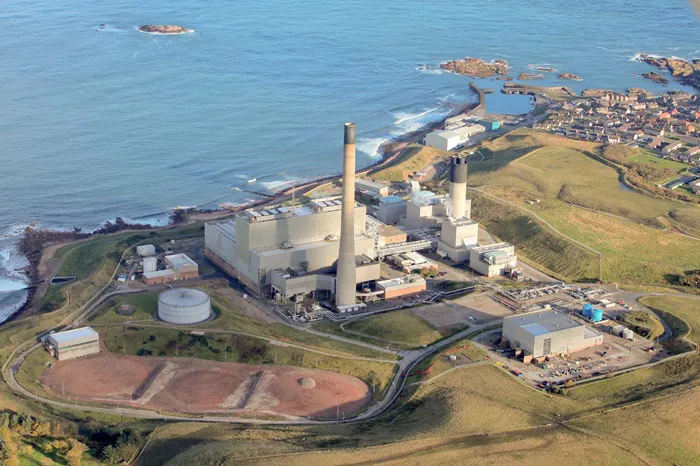Scottish ministers are poised to make a crucial decision in the coming months regarding the approval of a new gas-fired power station on vacant land northwest of the existing Peterhead facility. This decision has sparked a heated debate between environmental campaigners and proponents of new carbon capture technology.
Environmental Concerns
Environmentalists strongly oppose the construction of a new fossil fuel power station, arguing that it contradicts efforts to combat climate change. They believe there is no logical justification for adding another fossil fuel-based facility.
Support for Carbon Capture Technology
Proponents, however, argue that the new power station, dubbed Peterhead 2, will employ advanced carbon capture technology capable of reducing emissions by over 90%. This technology involves capturing greenhouse gas emissions and transporting them via pipelines to St Fergus, where they would be injected into depleted oil wells under the North Sea, approximately 50 miles offshore.
The Existing Peterhead Facility
The current Peterhead power station has been in operation for over four decades and is now the last remaining fossil fuel-burning facility in Scotland. Kate Raffan, a chemist who has worked there for ten years, remains optimistic about the future of the industry, despite Scotland’s long-term plan to transition away from oil and gas.
Youth Involvement in the Industry
Kate’s daughter, Catriona, began a commercial and procurement apprenticeship three years ago and initially had concerns about her decision. However, she now believes that fossil fuels may continue to play a role in Scotland’s energy mix.
Political Dilemma for SNP Government
The impending decision on Peterhead 2 places the Scottish National Party (SNP) government in a difficult position. Previously, the SNP opposed new oil and gas exploration in the North Sea. A draft energy strategy included a presumption against new exploration, but internal and industry pressures may lead to a reversal of this stance.
SSE’s Emission Reduction Claims
Energy company SSE asserts that the new Peterhead power station will capture and store over 90% of the carbon emissions produced by burning gas. Opponents, however, dispute these claims, citing the inconsistency of carbon capture and storage (CCS) technology in achieving such high levels of emission reduction.
Research and Criticism
Research by the Tyndall Centre for Climate Change Research questions the effectiveness of CCS technology in the energy sector. The study, commissioned by Friends of the Earth Scotland (FoES) and Global Witness, highlights that existing CCS projects worldwide typically target 90% emissions reduction at peak capacity, with some projects achieving as low as 65% in the initial years.
Environmental and Economic Impact
The existing Peterhead power station has been Scotland’s most polluting site for the past five years, emitting 1.35 million tonnes of CO2 in 2022. Caroline Rance, a climate and energy campaigner at FoES, argues that the new power station is unnecessary, as renewables already meet Scotland’s electricity demands. She also points out that reliance on fossil fuels drives up household energy bills.
Renewables vs. Fossil Fuels
Some environmentalists believe that CCS should be reserved for industries like cement and steel production, where alternatives to fossil fuels are harder to find. They advocate for a shift towards renewable energy sources like wind and solar for electricity generation.
Expert Opinions on CCS
Professor Jim Skea, chair of the Intergovernmental Panel on Climate Change (IPCC), supports the role of CCS in energy generation. He suggests that power stations could serve as anchor sources of carbon dioxide, making it economical to implement CCS across larger industrial hubs, such as the Scottish CCS cluster at St Fergus.
Role of Gas in Energy Generation
Finlay McCutcheon, managing director of SSE Thermal, emphasizes the importance of gas in providing flexible electricity generation. He believes that a wholly renewable system is impractical and that energy storage solutions will play a critical role during periods of low wind and solar generation.
Protests and Concerns
Climate campaigners continue to protest against the proposed power station, fearing it will operate without capturing and storing carbon emissions. They also worry that both the old and new facilities will continue running simultaneously, exacerbating environmental impact.
Company and Government Responses
SSE acknowledges concerns but asserts that the intention is to replace the current operation with Peterhead 2. A Scottish government spokesperson stated that it would be inappropriate to comment on a live planning application but assured that a decision would be made after considering all relevant information and public representations.
Related topics:

